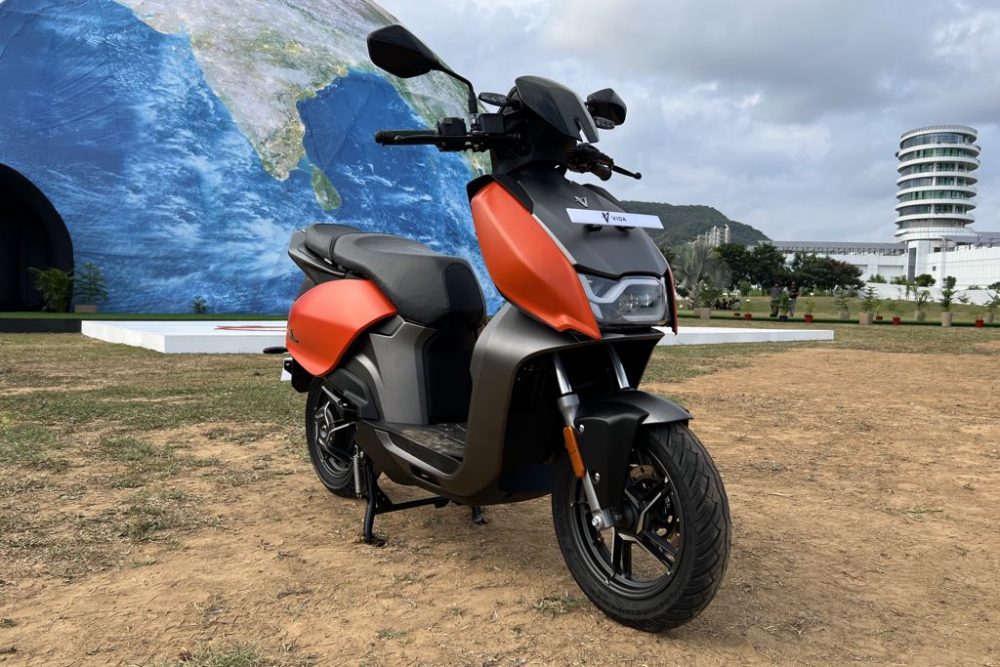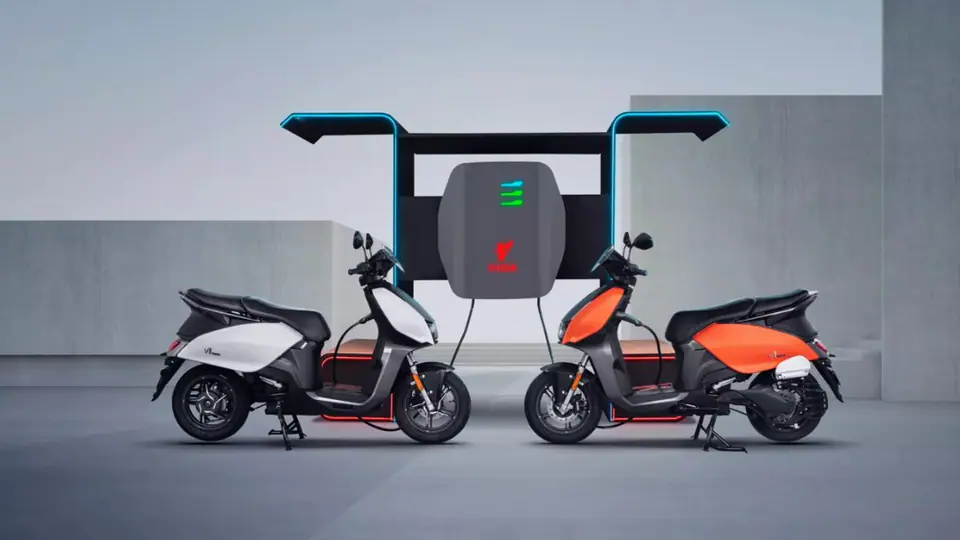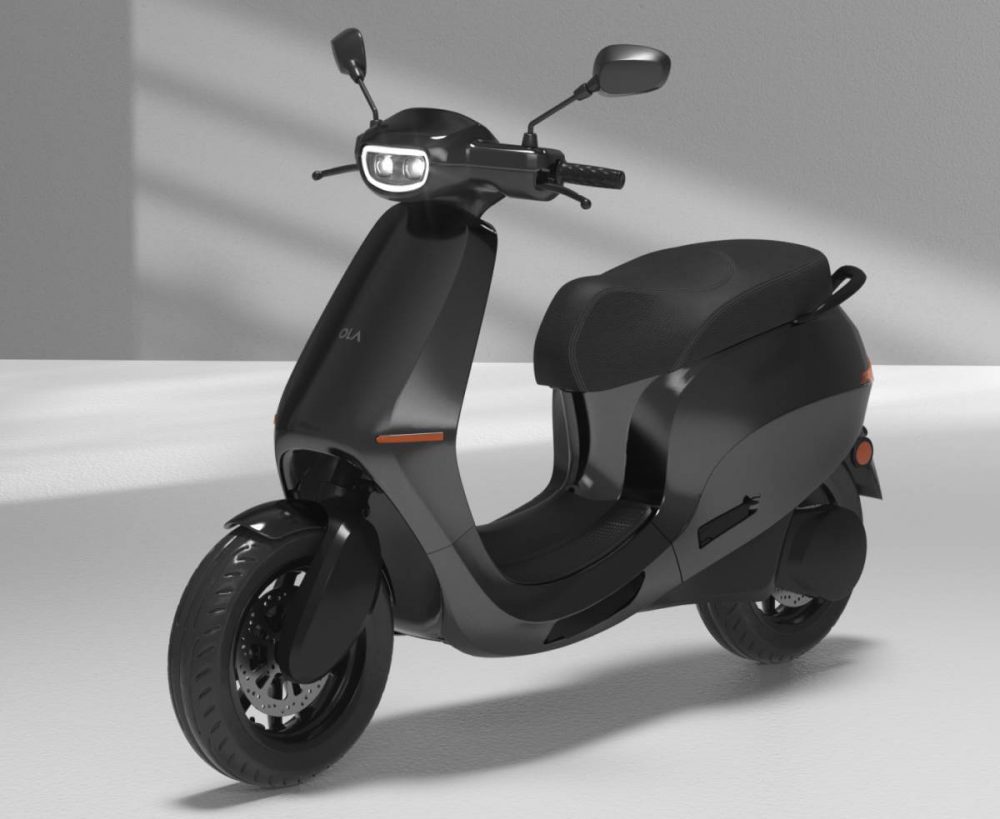Hailed as India’s largest two-wheeler OEM, Hero MotoCorp has finally entered the in-demand EV market with the launch of the Hero Vida V1 Electric on October 7th. But what remains to be seen is whether the Hero Vida V1 Electric can march ahead of key rivals; Ather Energy and Ola Electric in a bid to replicate its ICE success. Let’s see how the dynamics pan out.
The Hero Vida V1 Electric

Launched on October 7th, the Hero Vida V1 Electric marks the OEMs entry into the EV segment, a milestone that will be keenly observed for its impact on the electric market as a whole, since Hero is a name that has the potential to steer the two-wheeler market as a whole.
While the Vida V1’s package seems exciting, at any given point in time, the electric scooter from Hero will be up against two of the biggest rivals; Ola Electric and Ather Energy both of which are currently dominating the premium e-scooter market. The dynamics of this battle however is rather fun since Hero MotoCorp owns as much as 34.8% stake in Ather with another round of funding all set to make the number go up by another 2%.
While the OEM is definitely a late entrant when it comes to the hot-selling EV market, the hopes are high and so is the vision. Smartly strategizing its marketing campaign around the idea that it’s better to take time and cook up a wholesome product rather than being in the rat race of becoming the first to launch a half-cooked product, Hero MotoCorp is heavily relying on its manufacturing expertise and experience in order to attract consumers towards the Vida V1. But will that be enough? Only time will tell. On paper, however, here’s how the Vida V1 pans out:
Give This A Read: Mahindra ScorpioN vs Hyundai Creta | Bang For Your Buck?
Hero Vida V1 Electric vs. Rivals: Battery Dynamics (On Papers)

| Model | Vida V1 Plus | Vida V1 Pro | Ola S1 Pro | Ather 450X |
| Claimed Range | 143 km | 165 km | 181 km | 146 km |
| Battery Capacity | 3.44 kWh | 3.94 kWh | 3.97 kWh | 3.7 kWh |
| Claimed Top Speed | 80 kmph | 80 kmph | 116 kmph | 80 kmph |
| 0-40 kmph | 3.4 sec | 3.2 sec | 2.9 sec | 3.3 sec |
| Charging time | 5h 15m (0-80%) | 5h 55m (0-80%) | 6h 30m (0-100%) | 4h 30m (0-80%) |
| Fast charge | 1.2 km / min | 1.2 km / min | – | 1.5 km / min |
| Peak power | 6 kW (8 bhp) | 6 kW (8 bhp) | 8.5 kW (11.4 bhp) | 6.2 kW (8.3 bhp) |
On the lines of both the Ather and Ola Electric, Hero has also taken up the two-variant approach for the Vida V1, which will be offered in a top-end premium version along with a much more affordable, less-expensive version with a smaller battery and fewer features onboard.
In terms of battery packs, the top-end premium Vida Pro gets a 3.94 kWh battery pack, while the affordable Vida Plus comes with a 3.44 kWh Pack. In comparison, the Ola Electric gets a 3.97 kWh pack while the Ather gets 3.7 kWh of battery.

While the battery pack size isn’t an indicator of performance capabilities, it does however dominate the overall range. The battery also adds up to the overall weight of the scooter which if not complemented with added performance can ruin the driving experience by consuming a greater charge.
Coming to the range and charging time, the Ola Electric gets a certified range of 181 km, which is better than the Vida V1 Pro’s 165 km range, at least on paper. The Ola Electric can charge from flat to full in 6 hours & 30 minutes on a portable charger. For the Ather, the certified range is 146 km which is better than the Vida Plus’s 143 km range by only 3kms on paper. For the Ather however, charging is the USP with a 0-80 per cent charge in 4 hours & 30 minutes, as opposed to 5 hours and 15 minutes on the Vida V1 Plus, even though it has a larger battery. With one of Ather’s fast chargers from its ‘Ather Grid’ charging network, the scooter can be charged at a rate of 1.5 km per minute, as opposed to Vida V1’s 1.2 km per minute on both variants.

What sets the Vida V1 apart from the competitors, however, is the fact that it gets removable batteries. Now that can be both an advantage as well as a disadvantage which will totally depend on the use case and whether you as a user will be comfortable in carrying along two separate battery packs each measuring 11kgs approx. back to your house.
With that said, the Vida much like the Ola Electric and Ather can be charged at the parking spot as well, which in the coming years will prove to be a task as easy as breathing. So for Hero, the best of both world approach is what it aims to capitalise on.
Checkout: Was Your Car Flooded? | Check These Crucial Systems
Also Read: Easy Steps To Dry Your Flooded Car
Hero Vida V1 Electric vs. Rivals: Performance

Coming to performance, the Vida V1 can generate 6 kW (8 BHP) of peak power, sprinting 0 to 40 in 3.4 (Plus) and 3.2 (Pro) seconds respectively. For Ola Electric, peak power figures are higher at 8.5 kW (11.4 BHP) with a faster 0 to 40 sprint in about 2.9 seconds. Lastly for the Ather, power figures are clocked at 6.2 kW (8.2 BHP) with a 0 to 40 run in about 3.3 seconds. On paper thus, the Ola is the fastest of the lot and seems like a peppier option in terms of performance.
Hero Vida V1 Electric vs. Rivals: Price
The price dynamics of the three scooters are such that the Vida V1 Plus and Pro are priced between Rs 1.45/1.59 lakh respectively while the Ola S1 Pro is priced at Rs 1.39 lakh along with the Ather 450X is priced at Rs 1.55 lakh.
The base variant; the Vida V1 Plus, is priced on par with the top-end models of Ola and Ather, which is rather a disadvantage for Hero’s electric scooter as it gets a smaller battery pack than the S1 Pro and the 450X Gen 3. The only way the Vida can justify its price tag is by delivering real-world performance close to what the claimed range is.
But what Hero is relying on is the brand’s power as a legacy two-wheeler maker that played a crucial role in shaping the market itself. With decades of experience that saw several cult models being launched, Hero is counting on brand trust for Vida’s success.





